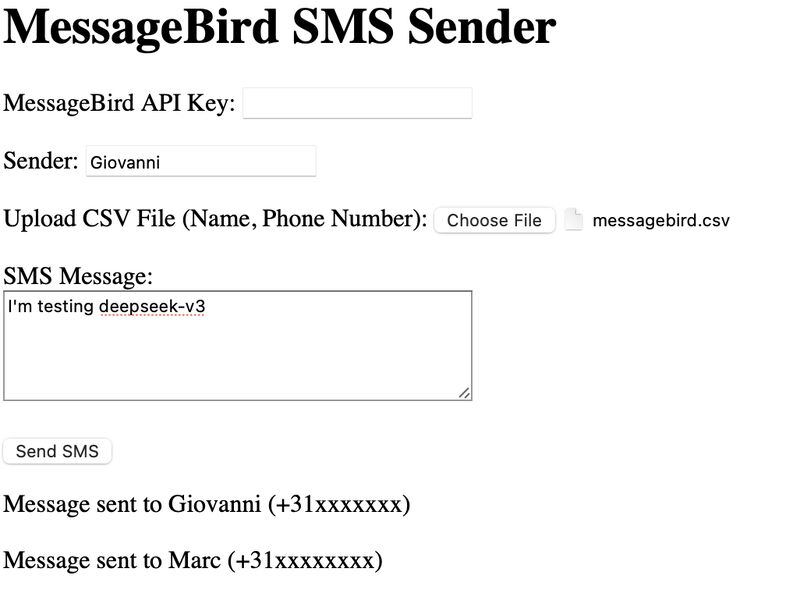The other day, our CEO, Anand Sahay, asked for my perspective on DeepSeek’s impact on the GenAI market. Instead of simply reading what others were saying, I decided to conduct a hands-on experiment—building a simple web application with DeepSeek and comparing the experience to previous projects using other models.
Why This Experiment?
The best way to truly understand a technology is to use it firsthand. Instead of reading what other thinks about it, I wanted to test DeepSeek in a real-world scenario.
Back in 2023, I built an SMS reminder application in Go—a programming language I never used before—leveraging ChatGPT. One of the key goals was to ensure portability, making it accessible to everyone within the company. Given DeepSeek’s alleged prowess in writing code, I wanted to see how it would handle the same challenge a similar project but with an even simpler tech stack—HTML and JavaScript.
Building an SMS Sender with DeepSeek
Before we proceed, let us summarize what the SMS sender app should do. Through it, you can send customized messages to a list of people—defined in a CSV file. The app needs a MessageBird API key, a message, and a CSV file containing names and phone numbers. The system then personalizes and sends SMSs accordingly.
The development process was strikingly efficient. Within 15 minutes, I had a fully functional web app. The only adjustment needed? Updating the “Sender” field, which I hadn’t specified in my original prompt! A minor fix later, and the app was running smoothly.

Cost & Performance Breakdown
One of DeepSeek’s standout features is its affordability. Here’s a quick breakdown of the cost:
- Input tokens used: 221
- Output tokens generated: 2834
- Input Cost per million tokens: $0.27
- Ouput Cost per million tokens: $1.1
- Total cost for building this app: 0.32 cents (a third of a cent!).
In comparison to other GenAI models, this was incredibly cost-effective. Another advantage? DeepSeek allows on-premise deployment as well as cloud-based usage, offering flexibility based on different business needs.
Beyond Cost: Transparency and Reasoning Capabilities
One feature that stood out was DeepSeek’s reasoning model, DeepSeek R1. This model performs on par with OpenAI’s latest offerings but with an added bonus—transparency. The ability to switch between DeepSeek V3 for generation and DeepSeek R1 for reasoning meant I could analyze the logic behind certain outputs and refine them where necessary.
Key Takeaways form DeepSeek test
- Efficiency: Building a functional web app took just 15 minutes with DeepSeek.
- Cost-Effectiveness: The project costs a fraction of a cent.
- Flexibility: DeepSeek can run both on-premise and in the cloud.
- Transparency & Reasoning: DeepSeek R1 offers a transparent chain-of-thought, setting it apart from competitors.
For those curious about the technical details, here’s the exact prompt I used for the initial coding task:
" Using the message bird API, create an HTML page that allows me to input my message bird API key, a CSV with names and phone numbers, and a text box in which I can enter the body of an SMS message that has to be sent via message bird to the phone numbers contained in the CSV file.."
Want to try the app yourself? You can test it here: MessageBird SMS Sender.
Do you want to learn more about the DeepSeek? Check How DeepSeek’s V3 & R1 Make AI Smarter, Cheaper, and More Secure





